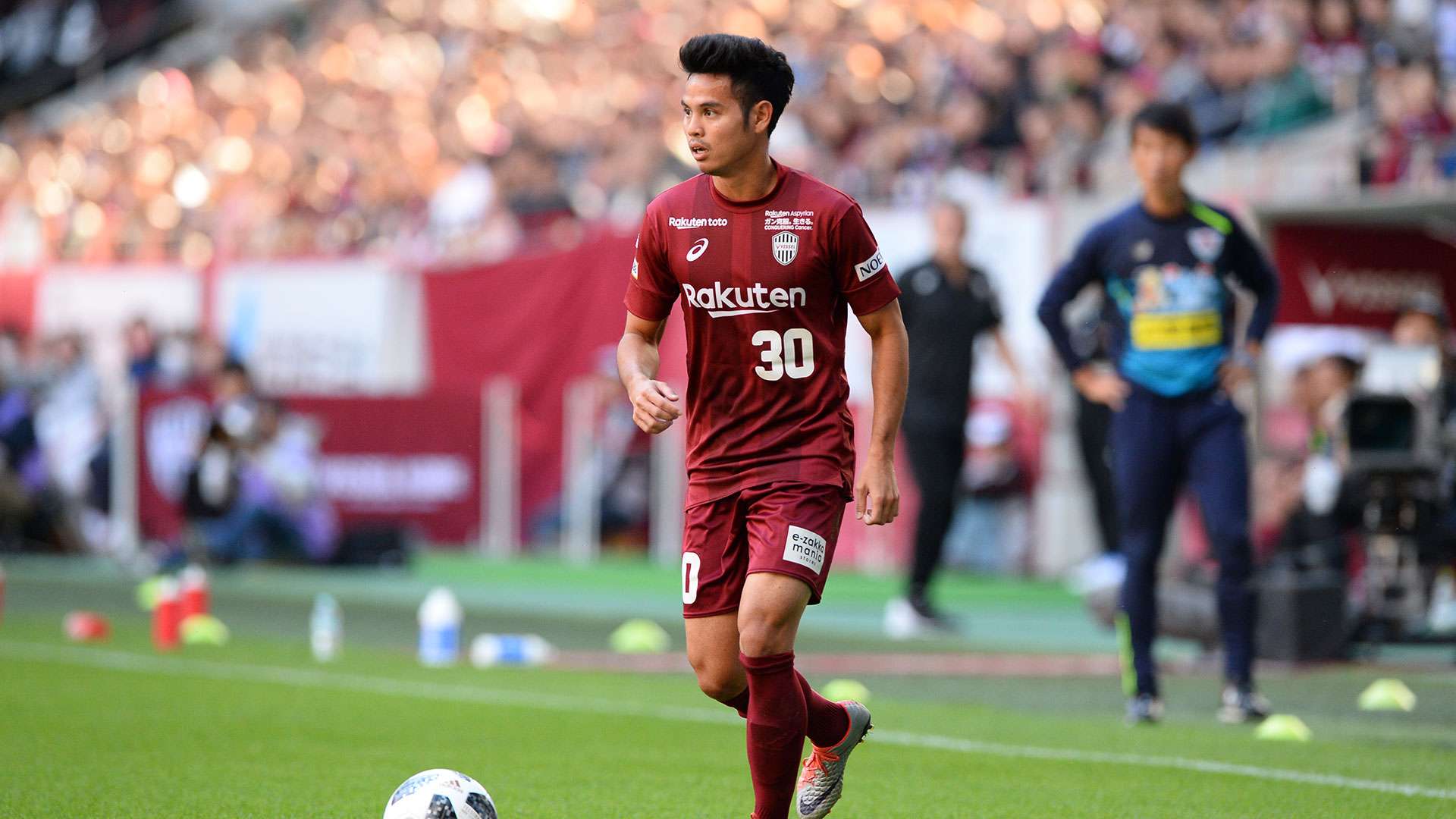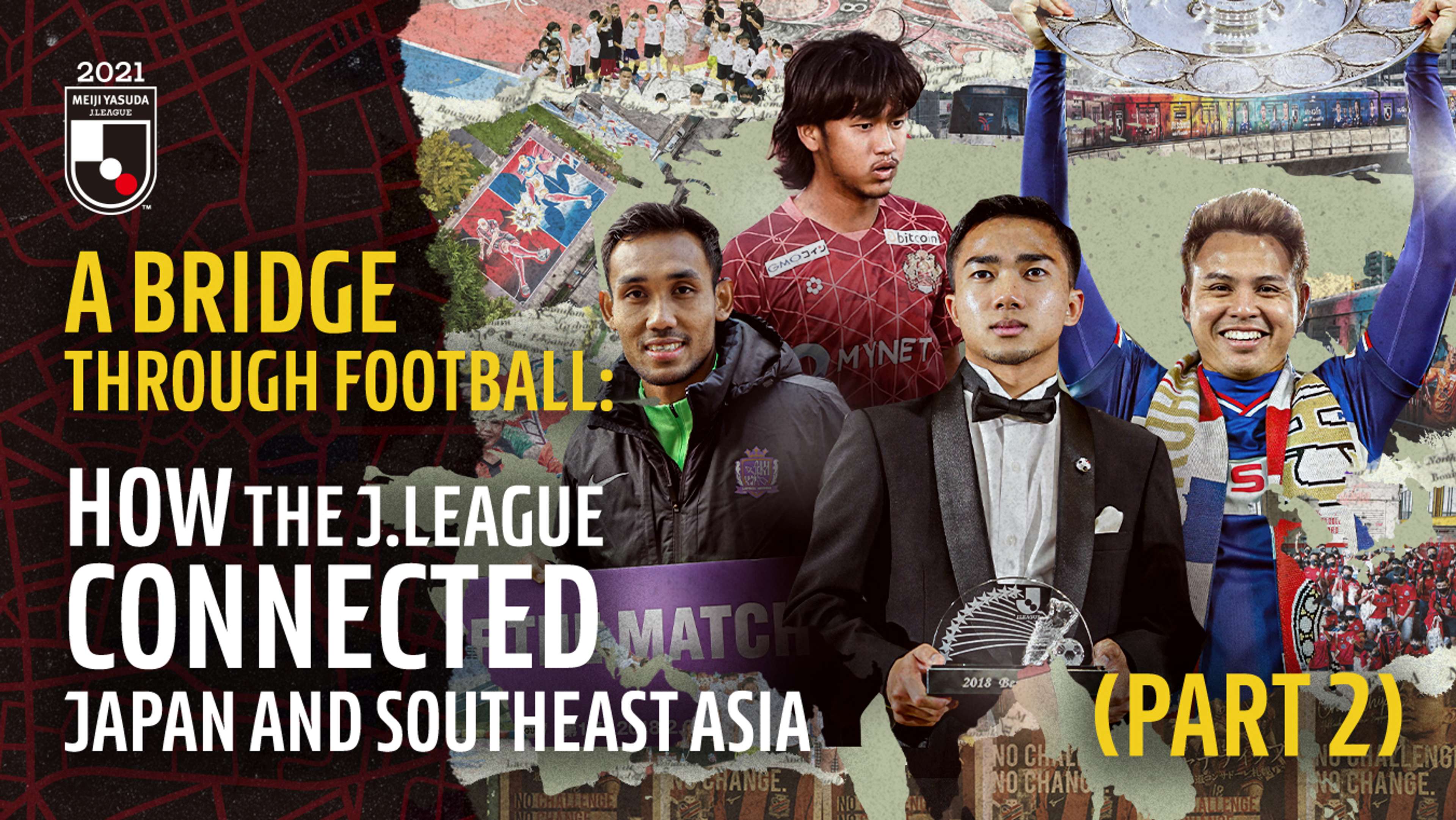The J.League’s ambitious “Asia Strategy” has been connecting the continent through football for almost 10 years now, sparking particular development across Southeast Asia and resulting in a steady influx of players from the region to Japan.
That includes the likes of Chanathip Songkrasin and Theerathon Bunmathan, a pair of Thai superstars who have written their names in J.League history by becoming the first Southeast Asian players to be voted into the yearly Best XI and win the J1 title, respectively.
While not all the arrivals have been able to establish themselves with such aplomb, they have each relished the opportunity to experience the J.League and taken away a great deal from their time in Japan.
“As a person, it was the first adventure for me, so it was really special,” Stefano Lilipaly said of his spell with Hokkaido Consadole Sapporo in 2014.
 Cesare Polenghi
Cesare Polenghi“I felt at home from the first time. For me it was important to feel at home as I’m really a family person. The culture, the kindness of the people is something special.”
The addition of the best ASEAN talent has helped the J.League further establish itself as the number one league in Asia, as well as inspiring players from the region to aim for the top.
“Football-wise I didn’t play that much, but to be honest I really enjoyed it,” Lilipaly said. “I gave my everything. The games I played, the friendly games and everything, I showed what I’ve got.
“Every training session I enjoyed. The atmosphere, the surroundings of the training complex, the pitch - everything is good. When I went there, every morning I was excited to go training, snow or no snow!
 Consadole Sapporo
Consadole SapporoEven before Lilipaly arrived in Japan he was impressed with what he knew of the J.League, sold in part on the experience by watching videos of the world-class facilities awaiting him in Hokkaido.
“Consadole is an amazing team,” he said. “When I Googled them and I saw the stadium, the Sapporo Dome, I was like, ‘Wow, what is this, man? I’ve never seen this in my life.’ I’ve only seen this on Transformers, you know? Like a car turning into a robot. Then, I saw the stadium, and I was like, ‘Wow this is something special, something unique.’”
Upon arrival, it became clear that the image of the place matched reality on the ground. “From teammates to the chairman you saw the professionalism of football,” the Indonesian continued. “Everybody showed up to be better every day. I’m also a person that if I go to training, even if it’s only one percent, I want to get better. If you look around you’d see everybody is working. That’s the atmosphere you want around you. Even if it’s only one percent everyday, that makes a difference in football.”
As more and more players follow Lilipaly’s lead and make their way from Southeast Asia to Japan, interest back home has unsurprisingly skyrocketed. Broadcast figures are rising, merchandising opportunities proliferate, there is huge growth on social media, and there was even an impact on tourism prior to the pandemic.
“Everybody was excited to see me go there, and of course everybody knows the J.League - in my eyes it’s the highest level in Asia,” Lilipaly said of the impact of his transfer to Sapporo. “I was really proud to go there and represent Indonesia in Japan.”
Chanathip and Theerathon’s success has provided subsequent opportunities in the J.League for several of their compatriots, while the door has also been thrown open to players from several other countries around the region, including Đặng Văn Lâm of Vietnam and Malaysia’s Hadi Fayyadh.
This is in keeping with the goals of the Asia Strategy, which aims not only to strengthen Japanese football but also to catalyze development across Southeast Asia by helping to raise the quality on and off the pitch.
J.League alums like Lilipaly demonstrate how this works in practice, and speak highly of the things they gained from their time in Japan.
 (C)J.LEAGUE
(C)J.LEAGUE“Mentally, it was something different,” the 31-year-old, now of Bali United, said. “It was the first time I went abroad and left my family behind. Mentally it made me a lot stronger.
“The experience to go there to see new things, to see other cultures, how they work, how they start their day. Small things, but we’d show up at six o’clock on the training pitch and everybody is already in the locker room showering, preparing and everything. It’s really like they are there to be better. Small things but it can make a big difference on your mindset.”
Such cultural exchange wouldn’t have been possible without the Asia Strategy, and the steps taken over the past decade have left an indelible mark on the game in Japan and across Southeast Asia.
And the project will only continue to gain traction in the coming years. More and more players will follow in the footsteps of Lilipaly, Chanathip and Theerathon, and as a result football in Asia will only become stronger.
“I fell in love with the country when I went there,” Lilipaly said when asked if he’d recommend the J.League to fellow Southeast Asians. “If you can go, go. I’ve said to Indonesian players, ‘If you have the opportunity, just go.”




.jpg?auto=webp&format=pjpg&width=640&quality=60)